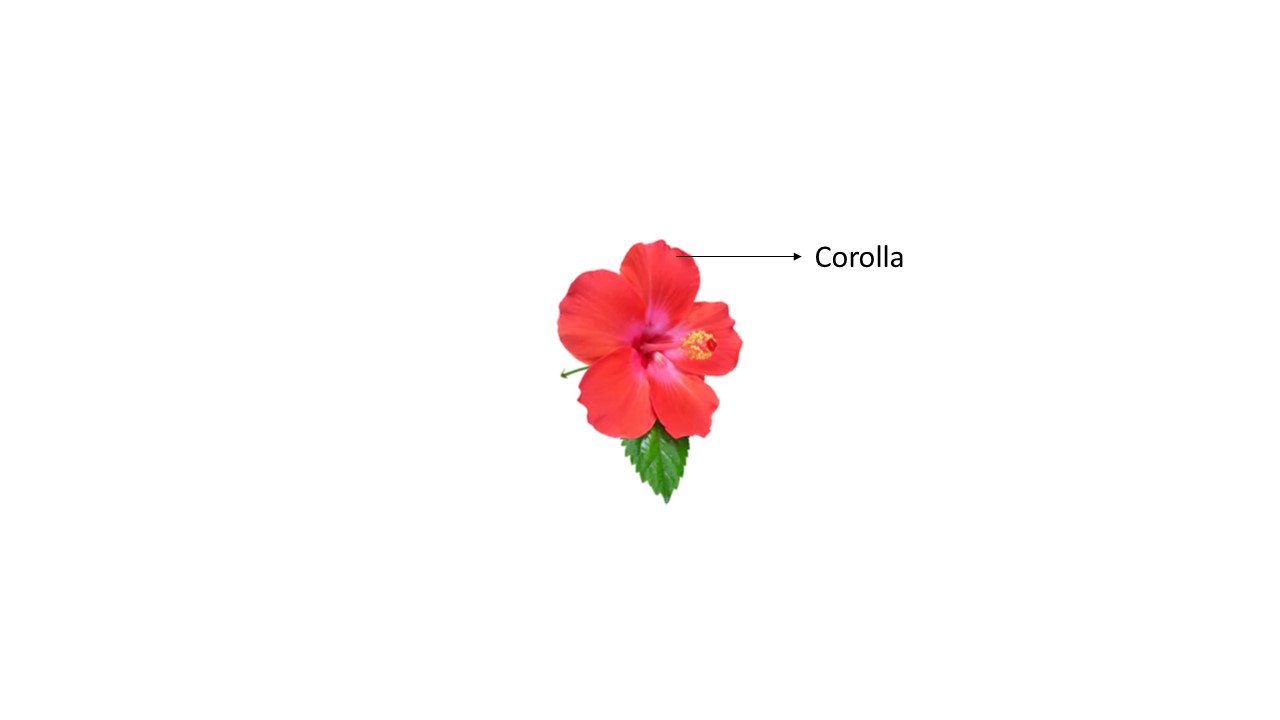
Corolla in China rose is
(a) 5, gamopetalous, twisted
(b) 5, gamopetalous, valvate
(c) 5, polypetalous, twisted
(d) 5, polypetalous, contorted
Answer
504k+ views
Hint: China rose is also called Bengal rose, and has petals that are unfused. In other words, the petals are separate from each other.
Complete answer:
Corolla in china rose has 5 petals, they are polypetalous and are fused at the base.
Polypetalous means the petals of the flowers are distinct as well as separable whereas, in the case of the gamopetalous flower, the petals will be completely fused and will appear like a tube.
The image of China rose is given in the below figure.

From this figure, we can see that the china rose has 5 petals which are polypetalous and twisted.
- Petals are altered leaves that surround the flowers’ reproductive part. The combined petals of the flower are called the corolla. Petals are generally brightly colored and are designed to attract the pollinators.
- Petals are accompanied by another type of special leaf structure known as the sepal which forms the calyx. The calyx and the corolla together form the perianth.
- The organization of the corolla will differ in different plant species. Thus, depending on the organization of the corolla, the plants can be classified.
- If the petals appear to be identical in size and shape, then it is called as actinomorphic or regular. Such flowers will have radial symmetry. Most of the flowers will be symmetrical solely in one plane (bilateral symmetry) and are known as irregular or zygomorphic.
So, the correct answer is ‘5, polypetalous, twisted’.
Note: The china rose has various health benefits. It improves blood circulation, treats menstrual problems, boils, arthritis, stomach pains, and swellings. The decoction of china rose is infused with tea and is consumed by many people.
Complete answer:
Corolla in china rose has 5 petals, they are polypetalous and are fused at the base.
Polypetalous means the petals of the flowers are distinct as well as separable whereas, in the case of the gamopetalous flower, the petals will be completely fused and will appear like a tube.
The image of China rose is given in the below figure.

From this figure, we can see that the china rose has 5 petals which are polypetalous and twisted.
- Petals are altered leaves that surround the flowers’ reproductive part. The combined petals of the flower are called the corolla. Petals are generally brightly colored and are designed to attract the pollinators.
- Petals are accompanied by another type of special leaf structure known as the sepal which forms the calyx. The calyx and the corolla together form the perianth.
- The organization of the corolla will differ in different plant species. Thus, depending on the organization of the corolla, the plants can be classified.
- If the petals appear to be identical in size and shape, then it is called as actinomorphic or regular. Such flowers will have radial symmetry. Most of the flowers will be symmetrical solely in one plane (bilateral symmetry) and are known as irregular or zygomorphic.
So, the correct answer is ‘5, polypetalous, twisted’.
Note: The china rose has various health benefits. It improves blood circulation, treats menstrual problems, boils, arthritis, stomach pains, and swellings. The decoction of china rose is infused with tea and is consumed by many people.
Recently Updated Pages
Master Class 11 Economics: Engaging Questions & Answers for Success

Master Class 11 Business Studies: Engaging Questions & Answers for Success

Master Class 11 Accountancy: Engaging Questions & Answers for Success

Master Class 11 English: Engaging Questions & Answers for Success

Master Class 11 Computer Science: Engaging Questions & Answers for Success

Master Class 11 Maths: Engaging Questions & Answers for Success

Trending doubts
Which one is a true fish A Jellyfish B Starfish C Dogfish class 11 biology CBSE

State and prove Bernoullis theorem class 11 physics CBSE

1 ton equals to A 100 kg B 1000 kg C 10 kg D 10000 class 11 physics CBSE

In which part of the body the blood is purified oxygenation class 11 biology CBSE

One Metric ton is equal to kg A 10000 B 1000 C 100 class 11 physics CBSE

Difference Between Prokaryotic Cells and Eukaryotic Cells




